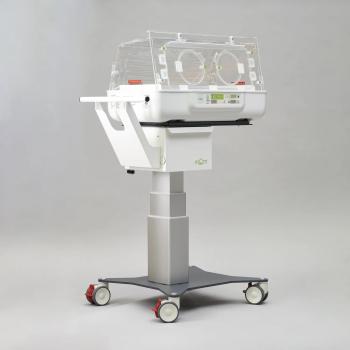
New ICD-10 codes to know before October
Changes for ICD-10 documentation codes that go into effect in October 2022.
Question: What are the new documentation codes for 2023?
Answer: The Centers for Disease Control and Prevention (CDC) issued the 2023 ICD-10-CM code
New Dementia Codes
An expansion of the dementia codes came from a request in the Centers forDisease Control’s (CDC) September 2021
The new guidelines for reporting dementia emphasize that providers must clearly document the severity of the patient’s condition. If the documentation is incomplete, the coder should query the provider or default to the appropriate unspecified code. The updated guidelines also instruct that if a patient with dementia is admitted to an inpatient facility and gets worse during their stay, the coder should assign the highest severity level reported during the stay.
In the
Mild dementia: “Clearly evident functional impact on daily life, affecting mainly instrumental activities. No longer fully independent/requires occasional assistance with daily life activities.”
Moderate dementia: “Extensive functional impact on daily life with impairment in basic activities. No longer independent and requires frequent assistance with daily life activities.”
Severe dementia: “Clinical interview may not be possible. Complete dependency due to severe functional impact on daily life with impairment in basic activities, including basic self-care.”
A few of the specific new dementia codes include:
- F02.811, dementia in other diseases classified elsewhere, unspecified severity, with agitation
- F02.A11, dementia in other diseases classified elsewhere, mild, with agitation
- F02.B11, dementia in other diseases classified elsewhere, moderate, with agitation
Endometriosis Code Expansions
For those providers who see patients for endometriosis or maternal care, there now are almost 400 new codes representing ob-gyn conditions. American College of Obstetricians and Gynecologists (ACOG) proposed an expansion to the endometriosis section of the ICD-10-CM code set, and you will now see many of the new endometriosis codes with further specificity to detail whether the condition is superficial or deep. The definitions below will be critical in choosing the correct code:
Superficial endometriosis: Ectopic growth of endometrial-like tissue that extends 5mm or less below the peritoneal surface. Lesions can vary in number (singular or in multiple locations).
Deeply infiltrating endometriosis: Ectopic growth of endometrial-like tissue that extends greater than 5mm below the peritoneal surface. Lesions can vary in number (singular or in multiple locations). These lesions are commonly associated with deep fibrosis and adhesions.
If you don’t see the terms “deep” or “superficial” in the physician’s notes, then look for any indication of how far below the peritoneal surface the tissue extended. This will be essential in selecting the right code under the new 2023 ICD-10-CM codes. For instance, you’ll report superficial endometriosis of the right ovary with N80.111, and deep endometriosis of the right ovary will code to N80.121.
Fetal Anomalies
ACOG and the Society for Maternal Fetal Medicine (SMFM) also requested new codes for fetal anomalies (e.g. Central Nervous System Anomalies (CNS), Chromosomal Anomalies, and Fetal Abnormalities and Damage). According to these groups, “This proposal will enable better tracking, measurement, and ultimately improved treatment modalities for identified fetal anomalies.”
Loss of Consciousness Clarification
For concussion and brain injury codes (e.g., concussions, contusions, traumatic brain injuries, blast injuries and hemorrhages), more than 100 new 2023 ICD-10-CM codes have been added in the S06 (Intracranial injury) range.According to the American Academy of Pediatrics (AAP), patients often present with injuries that code to the S06 category without a clear history of loss of consciousness (LOC), so they requested new codes to include identification of the LOC and, if present, how long it lasted.
With the LOC addition, you will need to know whether a patient lost consciousness in order to select the correct diagnosis code.For instance, if a patient had a loss of consciousness with a concussion, you’ll report a code from the S06.0XA series, whereas a primary blast injury of the brain with loss of consciousness of 30 minutes or less will code out to the S06.8A1 range of codes.Here are some specific examples:
- S06.0XAA, concussion with loss of consciousness status unknown, initial encounter
- S06.0XAD, concussion with loss of consciousness status unknown, subsequent encounter
- S06.0XAS, concussion with loss of consciousness status unknown, sequela
New Meth Overdose Codes
You will find a new code category describing poisoning by methamphetamines, as well as codes for adverse effects relating to meth use. In the past, coders reporting meth overdoses had to report these services from the general “amphetamines” category, but use of that code made it challenging for public health authorities to track meth overdoses.
You’ll find new codes in this category under the new T43.65 (Poisoning by, adverse effect of and underdosing of methamphetamines performed due to self-harm or assault) range. To report them accurately, you should find in the record whether the overdose was accidental, was, or if the status is undetermined. These factors will be essential in allowing you to select the correct code.
Additional New Codes
In addition to the new 2023 ICD-10-CM codes outlined above, there are many code changes impacting nearly every specialty. Take some time to review the following:
The CDC comprehensive ICD-10-CM listing can be found
Renee Dowling is a compliance auditor for Sansum Clinic, LLC, in Santa Barbara, California.
Newsletter
Stay informed and empowered with Medical Economics enewsletter, delivering expert insights, financial strategies, practice management tips and technology trends — tailored for today’s physicians.








